Thai cave rescue: How rescuers pulled off the ‘miracle’ operation
IT BEGAN with a team who didn’t know where to start and ended with the unimaginable - the safe return of each of the cave-trapped boys. This is how rescuers achieved the rescue ‘miracle’.
Real Life
Don't miss out on the headlines from Real Life. Followed categories will be added to My News.
The different ways of seeing things, Eastern and Western, was on display as foreign media tried to push Thai rescue leaders on what would have happened had one of the main pumps draining the cave — which stopped working just as the last of the 13 Wild Boars and the divers exited — failed just a few hours earlier.
There were still up to 100 workers in chambers two and three of the Tham Luang cave, where the base camps were located, when the pump gave out. Water started rising, noticeably, sending them hurtling to the cave’s entrance in a kind of semi-panic.
“What would have happened if the pump had failed earlier?” asked a Western journalist. The military chiefs and governor shifted on their seats, looking at each other. It wasn’t that they were uncomfortable with the question; they didn’t see the use of it.
The Buddhist philosophy on worry is that it is pointless, and they weren’t about to start now. The boys were safe, weren’t they?
The laconic Rear Admiral Apakorn Youkongkaew, head of Naval Special Warfare Command, shrugged. “Well, the pump did fail,” he said. “But we had a back-up plan. And everyone was out of the cave by then. Try to look at it as like a big moment at the end of an action movie — it was exciting.”
The Thai media fell about laughing while the rest of us waited for our translators to relay the joke.
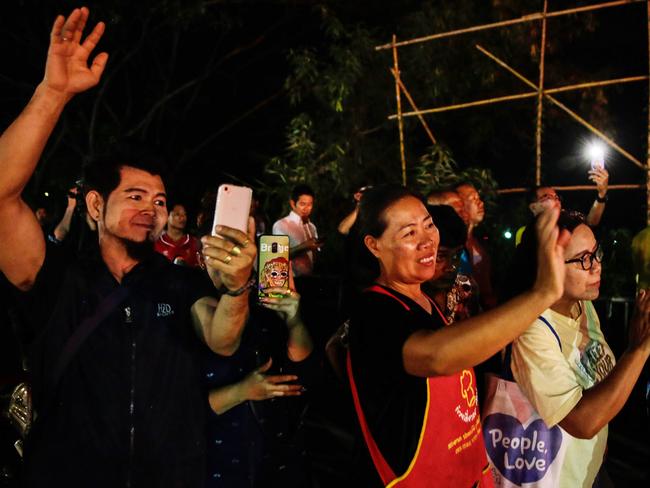
It was a ripping script, from start to finish. So much so that the Australian Federal Police media guy in Chiang Rai said he was being harangued day and night by Hollywood types looking to sign up Adelaide anaesthetist Dr Richard Harris, 53, the heroic cave-diving doctor who is a natural for the lead character.
He said they are offering “serious money”, but the AFP is not a casting agency and Harris — who knows the film industry, has worked in documentaries filming in the depths of caves for National Geographic — is hardly in the mood for such considerations after the sad passing of his 88-year-old father, James, just as the rescue came to its improbable conclusion.
Besides, Harris believes the real heroes are the Moo Pa or Wild Boar soccer team, the 12 boys who with their junior coach entered the Tham Luang cave on June 23 on a Saturday afternoon post-game excursion, only to find themselves probing too deep and caught by rising waters.
“We would particularly like to thank the players and their coach for placing trust in us. We wish them a speedy recovery,” read a joint statement from Harris and Dr Craig Challen — a WA vet and close mate of Harris, who was his support diver in the cave.

Picture: Facebook/Blue Label Diving
Harris had earlier given Malcolm Turnbull a less wooden assessment, telling him: “They’re the toughest blokes and kids I’ve ever had the pleasure to meet. They’re the ones who were responsible for their own morale and really their own safety. And without them being in the state they’re in we couldn’t have done anything — so that’s where all the credit really lies.”
We still don’t know whether the Wild Boar’s second coach, Ekkapon “Ake” Chantawongse, 25, holds any blame for leading the boys into the cave. Entering Tham Luang is not of itself a problem, if you remain in the huge initial amphitheatre. But something took them deeper, where they found they could not turn back.
But just like the failed pump, it is not something the Thais are dwelling on. They are enjoying the moment. “The children should not be blamed for the incident,” said Governor Narongsak Osotthanakorn, who became the face of the rescue.
“What happened was a misfortune that no one would like to see happen. Are they villains or heroes? We think they’re just little kids, doing kids’ stuff, and accidents happen. And when these kids grow up, they will know millions of people sent them support. The 13 will be good people.”
A TEAM GOES MISSING
The disappearance of the boys was of itself international news. Their abandoned bikes looked to tell a terrible tale. Parents wept. A local soothsayer reportedly declared them all dead while another said, no, they’re all alive.
The Thais moved into action regardless, deploying the Royal Navy SEALs to the scene. Meanwhile, in countries around the world, people who thought they could offer genuine help were stirring and thinking about getting to the scene.
“The first day we were called upon we started searching at 4am,” said Apakorn. There was no point worrying about the time of day — everything was always dark in the cave. They walked and swam for three kilometres till they reached a T-junction in the network known as Sam Yak.
“We started diving till we reached the fork but could not go in because sand was blocking the way,” he said. “There, we found the footprints of the kids.” And there began the beginnings of belief.
Still, it looked impossible. Sam Yak was flooded. Should they turn left or right at the fork? Though the cave had not been mapped in any detail, the passage to the right headed lower, meaning that path was probably totally inundated. Hope pointed left.
However, the SEALs did not have cave skills. “We are seamen,” said Deputy SEALs commander, Captain Anan Sudawan. “We don’t know about caves. We thought this might be easy until we saw the cave, how dark it was.”
They needed specialists. Not just military types, but a special breed known as spelunkers — those who live to explore the world’s subterranean caverns.
“We analysed and discussed how we were going to help these kids,” said Apakorn. “We found our strengths and got the greatest divers in the world to come and help us.”


British cave divers Rick Stanton and John Volanthen had arrived. A decision was made to start placing oxygen tanks along the route, so they could conduct an exploration. On Monday, July 2, they went in through Sam Yak, feeling their way through black water for five hours.
And then, as the world soon learned, there came the first of two miracles. The divers shone their torches on an incredible scene at a place 1700m beyond Sam Yak: not bodies, but humans, children and coach, huddled on a meagre 5m x 2m ledge. Cold, weak, anxious. But alive. All of them.
The words are now famous: “How many of you? Thirteen? Brilliant!”
The Brits shot torchlight vision that showed the boys — again, implausibly — quite calm though obviously relieved. Whether it was a reflection of their culture, their beliefs, or something else, it was almost as if they had expected this moment.

DON’T CELEBRATE YET
While the world celebrated, cooler heads knew the task was only beginning. How to get the boys out of a spot only the world’s best cave divers could negotiate, and even then with great difficulty? Rains were coming, chambers were filling.
And how would it be to find the boys alive only to see them die? Thailand didn’t need that. No one needed that.
The boys were anxious to get out, but the British divers had to make the agonising decision to leave them on the ledge, with promises to return. “Many, many people are coming,” they were told.
Back at chamber three, the base camp just before the Sam Yak fork, Captain Anan knew he had to send the boys food, water and foil blankets — not to mention the comfort of company — fast. He sent in four Thai SEALs.
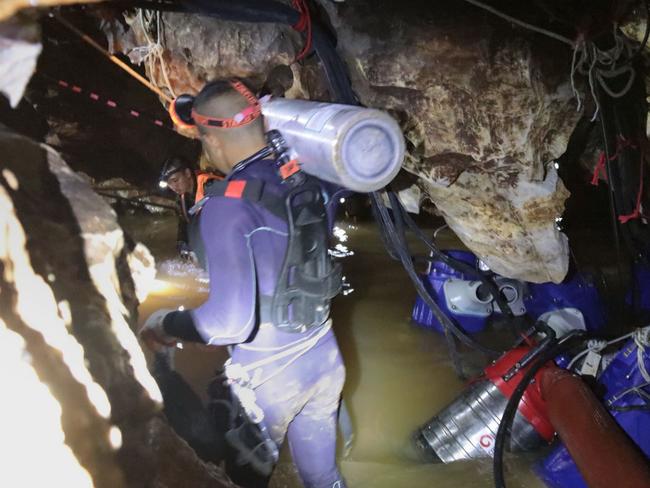

This journey was excruciating. The Brits had travelled swiftly to and from base camp but the inexperienced SEALs took 23 hours to return after reaching the boys. And only three of them returned.
One of them, Lieutenant-Colonel Park Lohachoon, a military-trained diving medic, had chosen to stay with them. Park, who would be the last man out of the cave when the rescue was completed, is now an authentic Thai hero, whose role is of equal standing to Harris and the two Brit divers.
All kinds of disaster and medical experts were now in place, offering advice but trying not to take control. Fortunately, the Thais were listening.
Medics had already anticipated the team might all be suffering pneumonia, having journeyed through water and then sat shivering on the ledge for days. But they soon learned of a bigger problem: the kids were using up oxygen fast in their little chamber and replacing it with carbon dioxide.

The fear was they would all slip into death. As Governor Osotthanakorn said: “If the level of oxygen got to 12 per cent, the boys would go into a coma. Normal people need oxygen at 20 per cent, but they were on 15 per cent. And water was coming. Here in the north, it’s like a waterfall.”
Two Thai seals went in with four international divers. The foreign divers were now managing the route and returning within three or four hours but the Thai divers were taking longer.
“My men, after six or seven hours, they hadn’t returned. I thought they might be taking a rest. And then a body came back.” Petty officer first-class Saman Kunan had perished, losing oxygen while returning from the ledge.
“We will remember him as a hero,” said Narongsak. “We used his determination to push through and make this a success.”
The Thais were learning on the spot. And they were not too proud to take advice. “Since we had 13 Boars waiting, we had to go on,” said Apakorn. “And we are learning to skill of cave diving from the international divers.”
FAILURE NOT AN OPTION
There was no turning back. “Oxygen was decreasing and the kids were becoming drowsy,” said Apakorn. “What were we to do? We had such time constraints. Finally, we got a plan from the international divers. I’m so glad. We approved it.”
It involved placing hundreds oxygen cylinders and a guide rope along the route, along with pulleys to transport the tanks for some of the journey.
It was not especially scientific: it was desperate. All had agreed the preferred method of finding a tunnel and drilling it out was not going to work in time. Apakorn said this option would have been “like performing a Herculean task”.
All the early talk of the kids spending “months” in the cave was no longer viable. They had to move, fast. Narongsak declared Sunday, July 8, to be “D-Day”. The extraction was on.
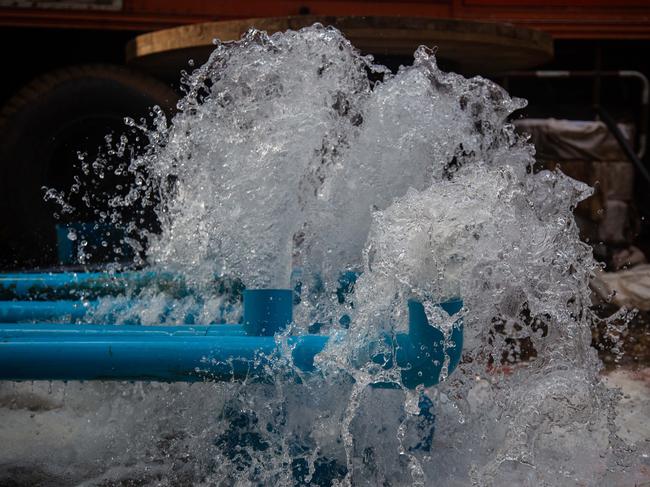
Harris, along with the Thai diving-medic, Park, and two other Thai SEALs, were sent in with a specific mission: clear the first four boys for travel. That involved giving a mild anxyiolitic sedative so the boys, most of whom could not swim, did not panic.
It was the Thai Prime Minister, Prayut Chan-o-cha, who first confirmed the use of the drugs. This came when a reporter asked him if the boys were being given sleeping pills. The PM swore at him, saying he was stupid to think the boys would be knocked out.
He said the sedative was “so the children won’t panic, just like we take anti-allergy so we feel OK and are not excited”.
They would wear fully contained wetsuits and face masks, with no mouthpiece, meaning they were fully relaxed as they were transported to safety. The pumps were by this time proving effective and there was not too much deep-diving that needed to be done. They would be walked, dived and stretchered to freedom.

By now, three core pump teams were working overtime: two draining millions of litres from within the cave, and a third creating weirs and diversions so the water would not return to the cave, all of this watched over by geologists and hydrologists.
The daily weather predictions were for heavy rain, which in northern Thailand falls in sheets. And it was falling — but not as much as the forecasts had predicted. The locals were not too surprised by this. They felt that a bigger hand was helping out.
In the pineapple, rice and corn fields below the mountain range, farmers had without hesitation agreed to have their crops flooded. They were told they would compensated to 1000 baht, or A$40, for each flooded rai (the unit of land measure used by the Thais, the equivalent of .16 of a hectare) and supplied with new seed.
No one quibbled. They weren’t worrying about their crops.
The plan worked. The rescue of the first four boys on Sunday was first known to the world by various spies in the cave tipping off media, but best of all by a digital portal known as MThai, which had the full inside running and was always accurate.
They revealed the boys coming one one-by-one by posting the words “Ood … Ood … Ood … Ood”. That’s Thai for “oink”. The little boars were coming out.
On Monday afternoon, another four oinks. The extraction had moved much faster than the previous day as the rescuers learned in real-time how to streamline their operation. The following day things moved even faster.
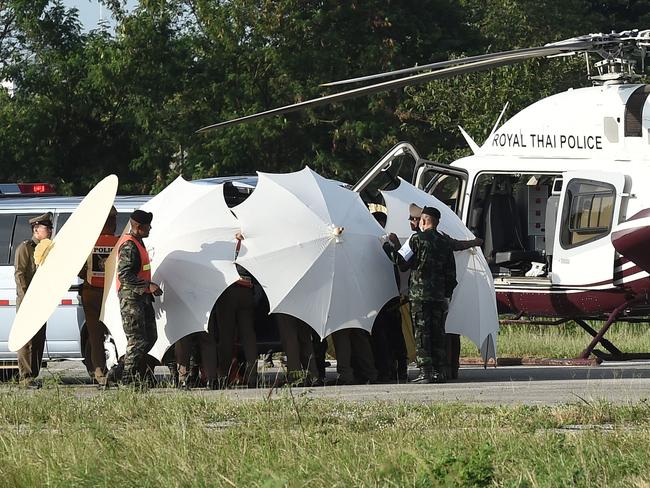
Eventually, over the three days, there would be 12 oinks followed by a message to denote that the final Boar was out, on Tuesday afternoon: “Hello coach Ake,” it read.
The second miracle.
Jubilation hit northern Thailand and, only moments later, the planet. For once, humanity was on the same page. Everyone wanted this. And it was delivered.
PROOF OF LIFE
The pumps had done their job, to the point where the journey along the difficult 1700m dive-swim trek from Sam Yak to the ledge was now mostly walkable, with only 350m of diving required. But it was far from easy, with Harris telling Turnbull the last 200m were the toughest, as they had to turn sideways through narrow holes in zero visibility.
“You’re following the line and basically might as well have your eyes closed for the whole trip,” he said.
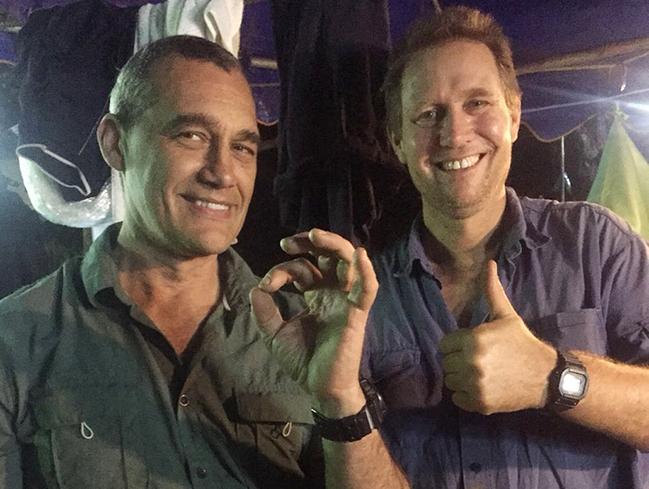
But they’d got them out. The boys were airlifted each day 60km south to Chiang Rai hospital, and immediately placed in quarantine and examined for waterborne diseases. The boys said they had seen no animal life in the cave, not even a single bat.
On one hand, the absence of bats would have been discouraging to the team because it meant there was no nearby access tunnel heading to the light. For the medics, it meant there was lower risk of microbiological contamination.

Three of the boys would prove to have mild cases of pneumonia that have been treated successfully. “Because the kids are still young, they are very resilient,” said Dr Jedsada Chokdamrongsuk from the Public Health Ministry after the first boys came out.
“They can talk normally, everybody is joyful and very glad to come out.” They immune systems were down and they were generally weak from the long exposure to water and cold, but they were otherwise well.
“They’re hungry and want to eat a variety of food, but at this stage we’re giving food that is easily digested and bland,” said the doctor. “They can sit up and eat, but there are no worrying conditions. They asked for bread with chocolate, which we think is OK.”
And just in case there was any doubt as to the team’s wellbeing, any thought that this was some kind of mega-conspiracy, on Wednesday evening the governor and rescue leaders revealed vision of the first two groups of boys, wearing hospital whites, sitting up in bed, smiling and waving.
Their mums, unable to hold their boys, watched on from behind a glass partition, crying but happy, beneficiaries of the twin miracles of Tham Luang cave.
How will Hollywood ever hope to match the true emotion and drama of what has happened here in northern Thailand? It will struggle to get even close.
paul.toohey@news.com.au
